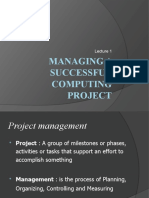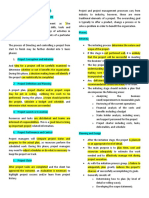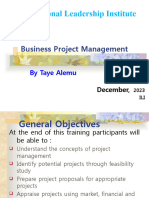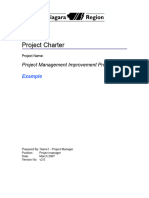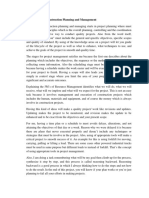0% found this document useful (0 votes)
52 views52 pagesProgramme and Project Management
The document presents a comprehensive overview of programme and project management, highlighting key concepts such as the differences between programmes and projects, project management processes, and the importance of monitoring and evaluation frameworks. It discusses project initiation, planning, execution, and closure, as well as factors contributing to project success and failure. Additionally, it emphasizes the role of public-private partnerships in enhancing project delivery and funding.
Uploaded by
peter jibir tawasuCopyright
© © All Rights Reserved
We take content rights seriously. If you suspect this is your content, claim it here.
Available Formats
Download as PDF, TXT or read online on Scribd
0% found this document useful (0 votes)
52 views52 pagesProgramme and Project Management
The document presents a comprehensive overview of programme and project management, highlighting key concepts such as the differences between programmes and projects, project management processes, and the importance of monitoring and evaluation frameworks. It discusses project initiation, planning, execution, and closure, as well as factors contributing to project success and failure. Additionally, it emphasizes the role of public-private partnerships in enhancing project delivery and funding.
Uploaded by
peter jibir tawasuCopyright
© © All Rights Reserved
We take content rights seriously. If you suspect this is your content, claim it here.
Available Formats
Download as PDF, TXT or read online on Scribd
/ 52









